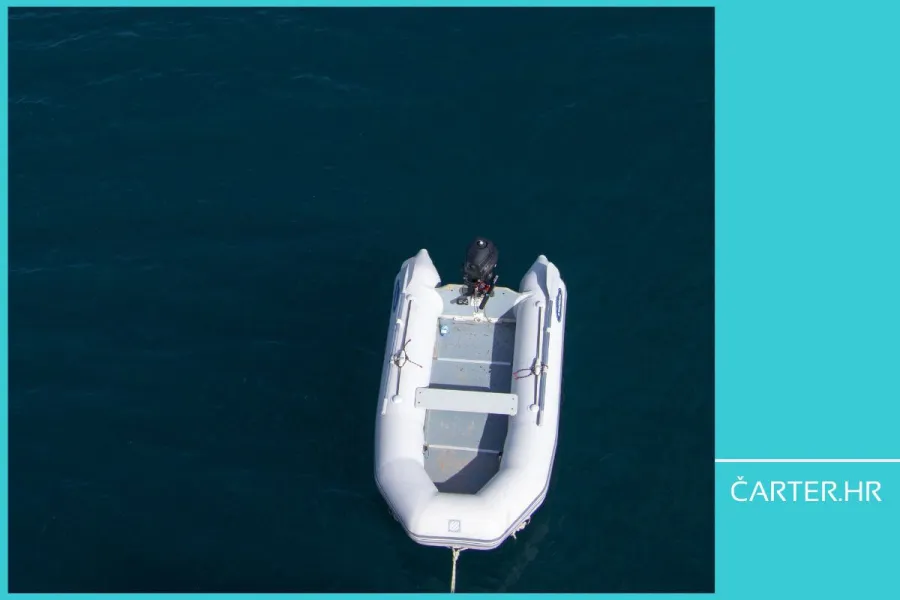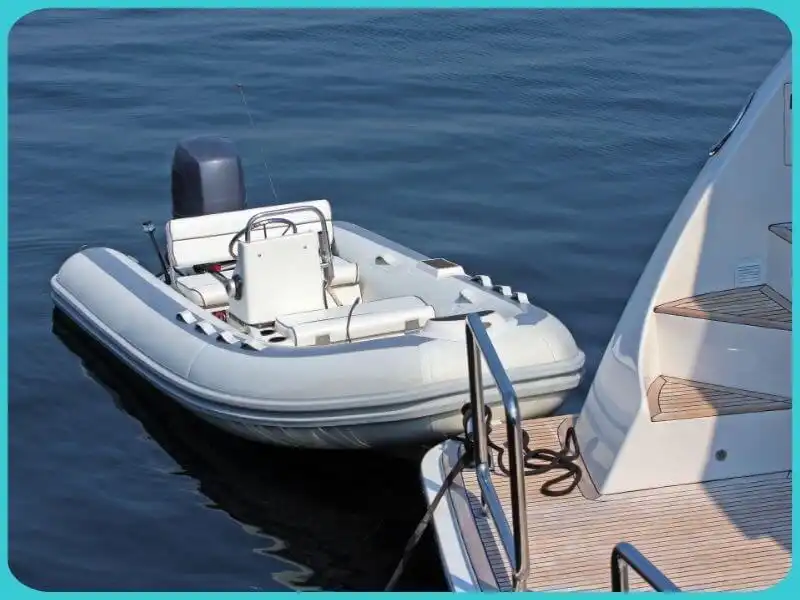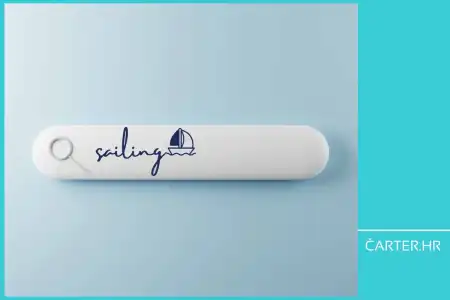
- 26.05.2025.
- News, Regulations
You've probably had at least one discussion about tenders in your yacht charter. No one was quite sure what was allowed and what wasn’t. What is the safe navigation area, is it allowed to transport passengers, etc.? The new Maritime Navigation Safety Ordinance finally resolves the question of the navigation area for tenders, but also brings order to some other segments of navigation.
On March 21, 2025, the new Regulation on Maritime Navigation Safety was published in the Official Gazette (NN 52/2025), which, among other things, more precisely defines the navigation area for vessels that belong to another maritime object.
Specifically, Article 49, Paragraph 9 states:
“A vessel that belongs to another maritime object and is registered or marked as part of the parent vessel’s equipment may navigate within an area up to 500 meters from the maritime object to which it belongs, except when transporting persons and goods from the maritime object to the nearest mooring point or between the anchorage and the port to which the anchorage belongs.”
Let’s remind ourselves which vessels can be characterized as belonging to another maritime object and which can be registered or marked as part of the equipment of the parent vessel.
According to the Maritime Code (NN 17/2019 and Amendments to the Maritime Code, which among other things defines a ship, boat, yacht...), these are vessels that belong to another maritime object but are not boats.
And while Article 5, Paragraph 7 of the Maritime Code (NN 26/15, 17/19) clearly states what a boat is:
“A boat is a vessel intended for navigation at sea, authorized to carry up to 12 passengers, whose hull length is greater than 2.5 meters and less than or equal to 15 meters, or with total propulsion power greater than 5 kW.”
According to the same Code, the term boat does not include:
- vessels that belong to another maritime object for the purpose of collection, rescue, or performing work
- vessels intended exclusively for competitions
- canoes, kayaks, gondolas, and pedal boats
- windsurfing boards and wave-riding boards
Given that both the aforementioned Code and the Regulation clearly define the navigation area and purpose of vessels belonging to another maritime object - but not a clear definition of what all such vessels are - the question arises: Can we then interpret that vessels which may be registered as part of the parent object’s equipment are those under 2.5 meters in length or with propulsion power under 5 kW (i.e., standard auxiliary boats in charter)?
Another question is whether auxiliary vessels in charter that exceed 2.5 meters in length and have propulsion power greater than 5 kW can still be considered part of the parent object or whether they must be registered in the boat register?
We sent questions to the Ministry of the Sea, Maritime Affairs and Infrastructure and to the offices of the port authorities in order to get a more precise interpretation.
In the meantime, we received their official response - read it at this link.
According to the new regulation, Article 49, Paragraph 10 clearly defines:
“A vessel located on another maritime object and registered in the boat register, for the purpose of work, sport, or leisure, may navigate without restrictions in accordance with the approved navigation area.”

Why is the situation with tenders in yacht charter so complicated?
There have been many misunderstandings regarding tenders in yacht charter, especially larger ones often used on catamarans and bigger yachts. Due to ambiguities in the regulations, the tender (regardless of its size and propulsion power) was not considered a separate vessel in practice, and many yacht charter companies did not additionally register it as a boat because it was already “part of the equipment”.
Supervisory authorities interpreted this differently in practice, which resulted in fines and problems in the field.
If a skipper transports guests using a tender longer than 2.5 meters and with an engine power greater than 5 kW, and that tender was not individually registered in the boat registry, the yacht charter company could be fined – even if it’s the same tender that, for example, comes with the catamaran as standard equipment.
The new regulation on navigation safety defines the navigation area of such vessels more clearly, but it does not explicitly standardize which vessel is considered part of the parent object's equipment.
What can yacht charter companies do?
- Check whether the tender rented together with the parent vessel complies with these regulations
- Include a notice about the use of the tender in the skipper instructions
Skippers and guests must know that a tender registered as part of the parent vessel's equipment:
may navigate “within an area up to 500 meters from the maritime object to which it belongs, except when transporting persons and goods from the maritime object to the nearest mooring point or between the anchorage and the port to which the anchorage belongs.”

Reminder of other rules still in effect
Although the new Regulation on Navigation Safety defines certain items more clearly, it’s worth repeating some situations, and so Article 49, Paragraph 8 states:
“Vessels and personal watercraft must at all times navigate in a manner that does not pose a danger to human life, property, the coastline, the marine environment, or the navigation safety of other vessels and personal watercraft, in accordance with prevailing conditions and circumstances, and spatial and other limitations.”
In addition to everything previously mentioned, the new regulation also defines some restrictions to be mindful of, Article 49, Paragraph 3:
“Vessels must not approach the fence of a designated swimming area, as follows:
-vessels 30 meters and longer and seaplanes must remain at least 300 meters away
-vessels 15 meters and longer but shorter than 30 meters must remain at least 100 meters away
-vessels shorter than 15 meters must remain at least 50 meters away.”
All of this must be clearly communicated to both guests and skippers – because although these are “technical details,” misinterpretation can lead to fines.
Is everything clearer now?
For yacht charter companies, tenders are an essential part of operations. These changes in the new Regulation on Maritime Navigation Safety do not bring anything dramatically new – but they do define some important points more clearly, such as the navigation area.
However, the question remains on how to interpret the Maritime Code and this new Regulation regarding which vessels in their fleet yacht charter companies can register as part of the parent vessel’s equipment, and which cannot.
A clear directive from the Ministry of the Sea, Transport and Infrastructure or another competent authority would certainly contribute to better understanding of this topic. As previously mentioned, we have submitted an official inquiry and will inform you of all relevant information as soon as we receive a response.
The key to the issue lies in clarity: having aligned instructions, and let’s not forget that guests are often uninformed – which is why the responsibility lies with everyone working with guests to provide them with accurate information.
The new Regulation on Maritime Navigation Safety can always be found on čarter.hr Info, along with other information all in one place.
Don’t forget to subscribe to our regular newsletter for even more information and tools on the yacht charter and nautical industry.
Categories of trends
- News
- Sale
- Marketing
- SEO
- Web design
- Social media
- Technology
- Regulations
- Management
- Education
- Finances
- User experience
Newsletter
Sign up for the newsletter and receive the latest trends and tips straight to your inbox




